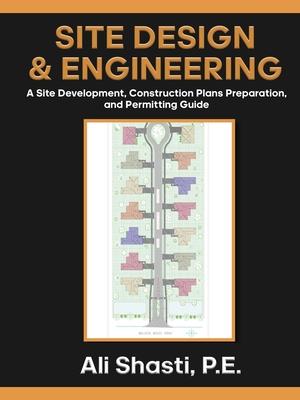SITE DESIGN & ENGINEERING IS a Site Development, Construction Plans Preparation, and Permitting Guide. It assists in designing an optimized site development.
The author's primary purpose is to provide much-needed residential and commercial site development guidance to property owners, developers, architects, engineers, students, and contractors to develop a sound set of approvable and constructive construction plans. It also intends to explain the permitting process, fast-tracking permit approval, and development of sound engineering projects.
How to use this book
The first chapter evaluates a suitable site for the type of development a potential property owner may seek. It explains how to select a property with minimal problems and risks. And how to be mindful of potential issues to avoid ensuring profitability.
The second and third chapters focus on gathering the survey and geotechnical information for the site. Although surveying differs from geotechnical engineering, they are two essential elements of any successful design and construction project.
Chapter 4 provides some design information and processes after the first three chapters. There are many ways of designing a specific project. However, there probably aren't too many ways to optimize a design.
Chapter 5 reviews different activities and their definitions and requirements for construction and other activities in the right-of-way and how to approach the AHJ and obtain the necessary permits for encroaching right-of-way for construction.
Chapter 6 provides information regarding single-family residential and accessory dwelling units (mother-in-law) and how to prepare construction plans to start the permitting process.
Chapter 7 discusses the design and construction plans for a small sixteen-lot residential subdivision. Project 2, featured in this chapter, shows how a project starts from vacant land and develops to the survey map and a final completed construction plan.
Chapter 8 is the same as Chapter seven, except it is an example of a larger nineteen-lot residential subdivision. Plus, each lot is much larger than the lots in Project 2.
Chapter 9 presents commercial project site improvements for a three-story chain hotel and a potential dine-in restaurant.
Chapter 10 reviews and discusses the permitting agencies' processes and requirements.
